第56章 MONEY OR SIMPLE CIRCULATION(37)
The universal means of exchange act however merely as means of purchase and means of payment ,two forms which we have already described,but their relations are reversed on the world market.When in the sphere of internal circulation money was used as coin,i.e.,as the intermediary link in the dynamic unity C --M --C or as the merely transitory form of exchange-value during the perpetual motion of commodities --it functioned exclusively as means of purchase.The reverse is the case on the world market.Here gold and silver act as means of purchase if the interchange is only unilateral and therefore purchase and sale are separated.For example,the border trade at Kyakhta is in fact and according to treaty stipulations barter,in which silver is only used as a measure of value.The war of 1857-5823induced the Chinese to sell without buying.Thereupon silver suddenly appeared as means of purchase.In deference to the letter of the treaty,the Russians turned French five-franc coins into crude silver articles which were used as means of exchange.Silver has always served as means of purchase for Europe and America,on the one side,and Asia,where it congeals into hoards,on the other.Precious metals,moreover,serve as international means of purchase when the usual equilibrium in the interchange of products between two nations is suddenly disturbed,e.g.,when a bad harvest compels one of them to buy on an extraordinary scale.Precious metals,finally,are used as international means of purchase by the gold and silver producing countries,where they are direct products and also commodities,and not a converted form of commodities.With the development of commodity exchange between different national spheres of circulation,the function which world money fulfils as means of payment for settling international balances develops also.
International circulation,like domestic circulation,requires a constantly changing amount of gold and silver.Part of the accumulated hoards is consequently used by every nation as a reserve fund of world money,a fund which is sometimes diminished,sometimes replenished according to fluctuations in commodity exchange.[8]In addition to particular movements of world money which flows backwards and forwards between national spheres of circulation,there is a general movement of world money;the points of departure being the sources of production,from which gold and silver flow in various directions to all the markets of the world.Thus gold and silver as commodities enter the sphere of world circulation and in proportion to the labour-time contained in them they are exchanged for commodity equivalents before reaching the area of domestic circulation.They accordingly already have a definite value when they turn up in these areas.Their relative value on the world market is therefore uniformly affected by every fall or rise in their costs of production and is quite independent of the degree to which gold or silver is absorbed bY the various national spheres of circulation.One branch of the stream of metal which is caught up in a particular area of the world of commodities immediately enters the domestic circulation of money as replacement of worn-out coins;another is diverted into various reservoirs where coin,means of payment and world money accumulate;a third is used to make luxury articles and the rest,finally,is turned simply into hoards.Where the bourgeois mode of production has reached an advanced stage the formation of hoards is reduced to the minimum needed by the different branches of the circulation process for the free action of their mechanism.Under these conditions hoards as such consist only of wealth lying idle,unless they represent a temporary surplus in the balance of payments,the result of an interruption in the interchange of products and therefore commodities congealed in their first metamorphosis.
Just as in theory gold and silver as money are universal commodities,so world money is the appropriate form of existence of the universal commodity.
In the same proportion as all commodities are exchanged for gold and silver these become the transmuted form of all commodities and hence universally exchangeable commodities.They are realised as embodiments of universal labour-time in the degree that the interchange of the products of concrete labour becomes world-wide.They become universal equivalents in proportion to the development of the series of particular equivalents which constitute their spheres of exchange.Because the exchange-value of commodities is universally developed in international circulation,it appears transformed into gold and silver as international money.Since as a result of their versatile industry and all-embracing commerce the nations of commodity-owners have turned gold into adequate money,they regard industry and commerce merely as means enabling them to withdraw money in the form of gold and silver from the world market.Gold and silver as international money are therefore both the products of the universal circulation of commodities and the means to expand its scope.Just as the alchemists,who wanted to make gold,were not aware of the rise of chemistry,so commodity-owners,chasing after a magical form of the commodity,are not aware of the sources of world industry and world trade that are coming into being.Gold and silver help to create the world market by anticipating its existence in their concept of money.Their magical effect is by no means confined to the infancy of bourgeois society,but is the inevitable consequence of the inverted way in which their own social labour appears to the representatives of the world of commodities;a proof of this being the remarkable influence which the discovery of gold in various new areas exerted on international trade in the middle of the nineteenth century.